This is nothing new, sadly #
This is not a new build. This post is simply a short and sweet build post repackaging the build I did a few years ago into something much smaller to fit ‘properly’ into my apartment rack. That post is here:
Why Tho? #
This is why. #
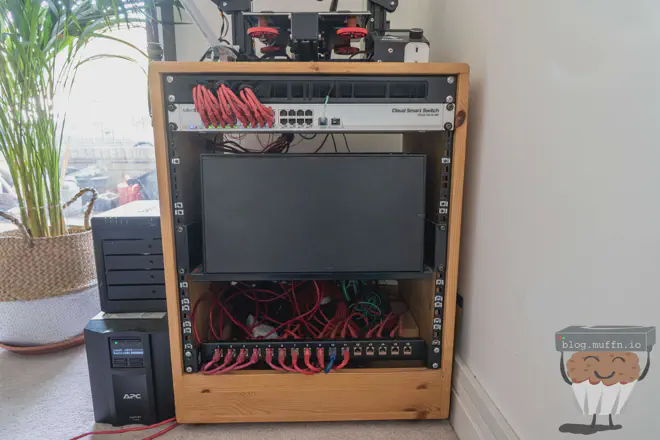
This case used to sit pretty nicely tucked away in the corner of my old apartment, but my new apartment has more space so I have this little wooden rack in the corner of my office. As you can see, I have been keeping the old server build as-is in there, sideways.
Whilst annoying, I wasn’t really bothered about spending any money to fix this as it was just fine.
Recently, I removed the storage from the server and replaced it with a Synology that was no longer being used, so most of the case became an empty void.
It started to annoy me that I had a massive case that wasn’t really filled, sideways in my rack. This also meant I had to have things like my Synology off to the side sitting on top of my UPS, also sideways.
The Solution #
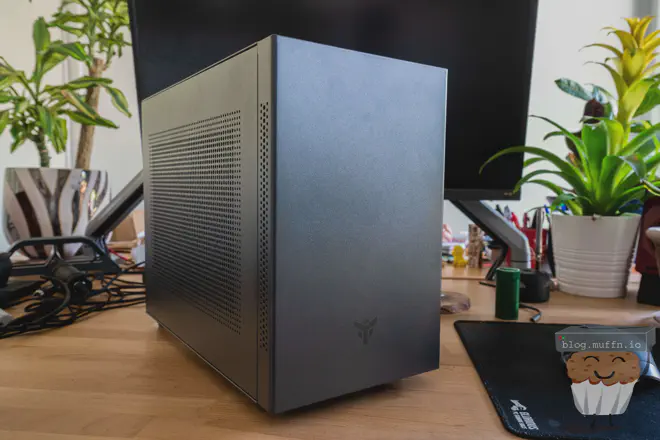
The Itek Evoke seems to be the smallest mATX case you can get. I have no idea who this brand is, but it appears to be a clone of the Sama IM01, another brand I don’t know.
I did toy around with doing an ITX server build but thought it was a pretty big waste of money as the current setup is perfect for my needs in my apartment. The main thing was finding something that fit in my rack properly, and thankfully this does without being ITX.
The solution ended up being simple, transplant everything into a new, smaller case.
Slight Upgrades #
As mentioned before, this is mostly the same build I posted about a few years ago. Some things have changed since that post, namely:
- The i3-6100T has been replaced with an E3-1270 v5. I got the CPU for a steal so it made sense to upgrade.
- I no longer run TrueNAS virtulised. Nothing against the setup, IMO this is a great way to do homelab storage but it was just no longer necessary as I went from a load of 4TB disks to a few 8TB disks in a Synology I had spare. I also leverage cloud storage these days for the bulk of my storage needs.
- The 16GB of memory is now 32GB in the form of 4x8GB instead of the 1x16GB as I no longer ‘require’ ECC owing to dropping TrueNAS. I do want to get this to 64GB once I get a good deal, however long that may take.
- I got rid of the GPU. I never got around to doing a virtualised steam remote play machine and I now have a Steam Deck.
All in all, this thing did a solid 2 years of being on 24/7 from being built until I moved out, with the uptime being almost the entire 2 years.
It’s been just as reliable here too, I run important machines on it that keep my apartment running, from internet via pfSense, to DHCP/DNS on a domain controller, Home Assistant in a VM and a bunch of docker containers. It just chugs along without me having to think about it, and that is something I have taken for granted.
Transplanting #
Transplanting into the Evoke was a relatively easy affair. The case has been thought out pretty well and was very easy to build in even with its small size.
I’d forgotten how long I’d left the old server alone and the dust buildup was pretty gross.
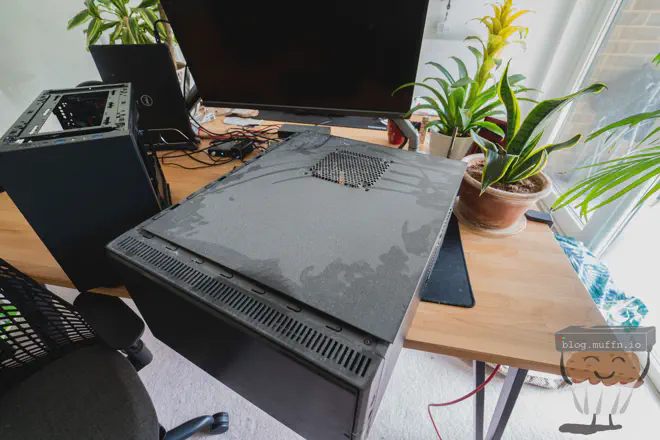
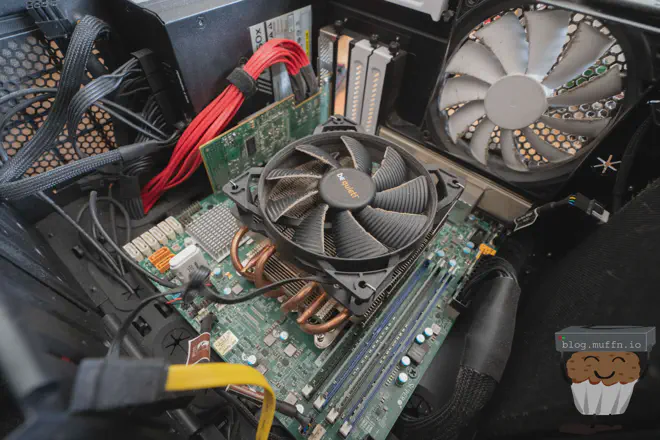
I only had to remove the motherboard and PSU along with its cables. The new case supports SFX PSUs as well as full-sized ones, with the latter needing the removal of an SSD/HDD cage which was not an issue for me. Once this is done it simply hangs from the top in the front.
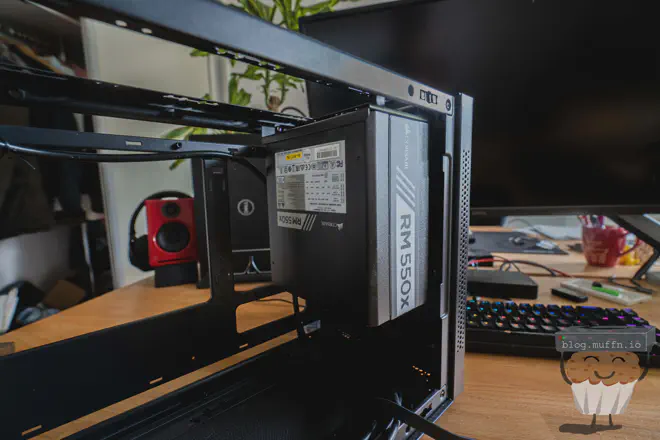
Once that’s done it’s as easy as slotting in the motherboard and routing the few cables required.
I did, of course, remove the cooler to reapply paste and spray the entire thing with a lot of compressed air.
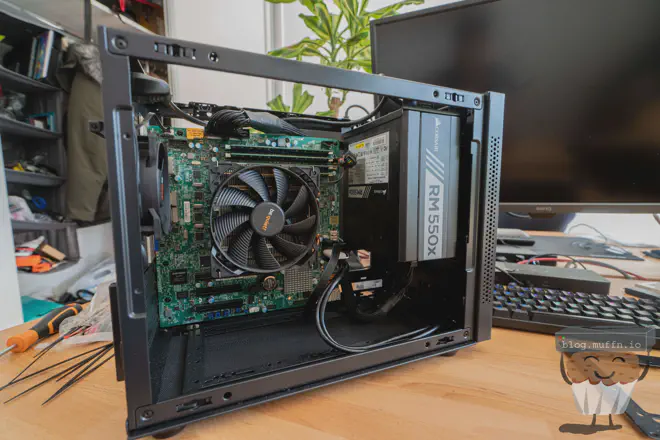
The case has side panels that simply pop on and off which makes it very nice, not having to deal with screws but also being very secure is a massive win. I will say, however, that your skin oils will show very easily on the finish, as shown below.
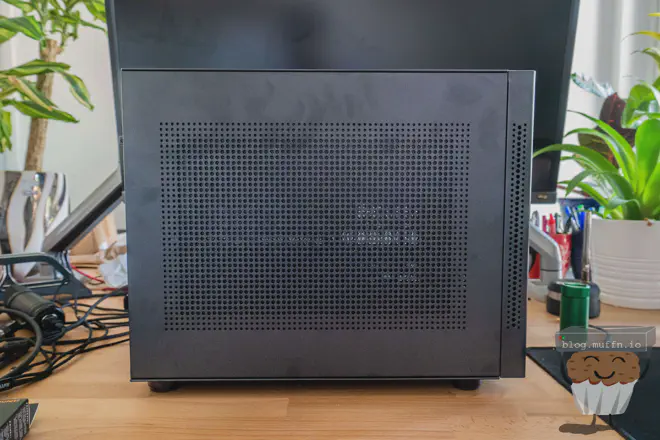
Cable management can be very tricky in such small cases, thankfully this build required very little. The 24 pin ATX connector barely fit around the back and the side panel needs some pressure to fully close, and even then it can pop out easily but this isn’t a big deal.
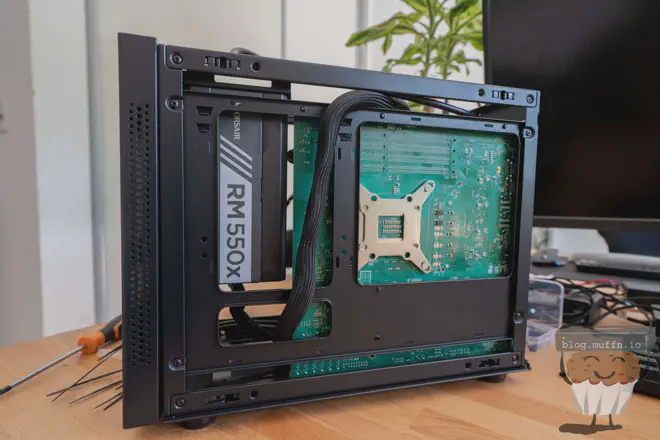
I also grabbed some small 80mm be quiet! fans to put in this. The original plan was to put them both at the back but that didn’t fit well, I had just assumed it would. Instead, I opted to use one as I didn’t want to put one on the side bracket.
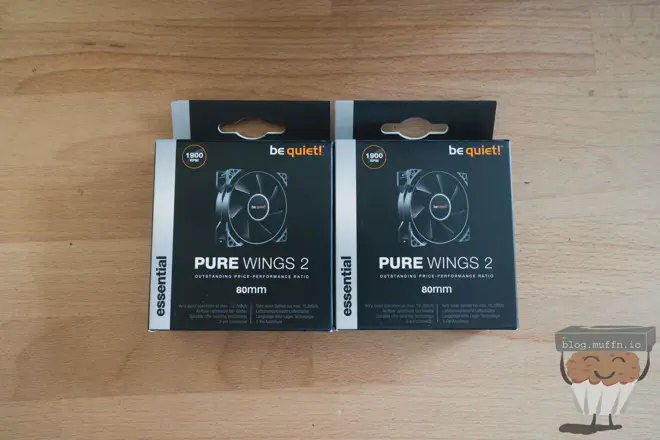
Overall the case is very well ventilated. The parts used in this build coupled with the workloads I do does not make temperature an issue.
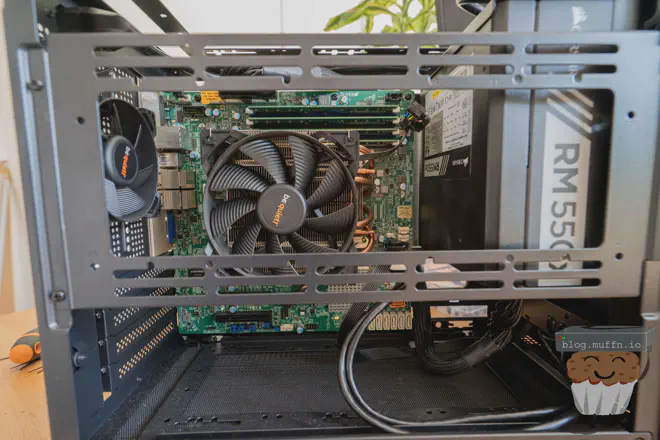
Everything fits really well and it’s the perfect little case for an SFF homelab.
Racking #
Racking was easy of course as it’s just sitting something down on a shelf.
It was immensely satisfying to be able to stand it upright instead of laying clunkily sideways and sticking out the back.
Since doing this transplant and writing this blog post I have added more equipment too. I now have an external enclosure attached to my NAS for external backups as well as an Intel NUC as a docker host, mostly for Frigate to work alongside my Google Coral TPU. Coral TPUs do not work with ESXI passthrough to my disappointment.
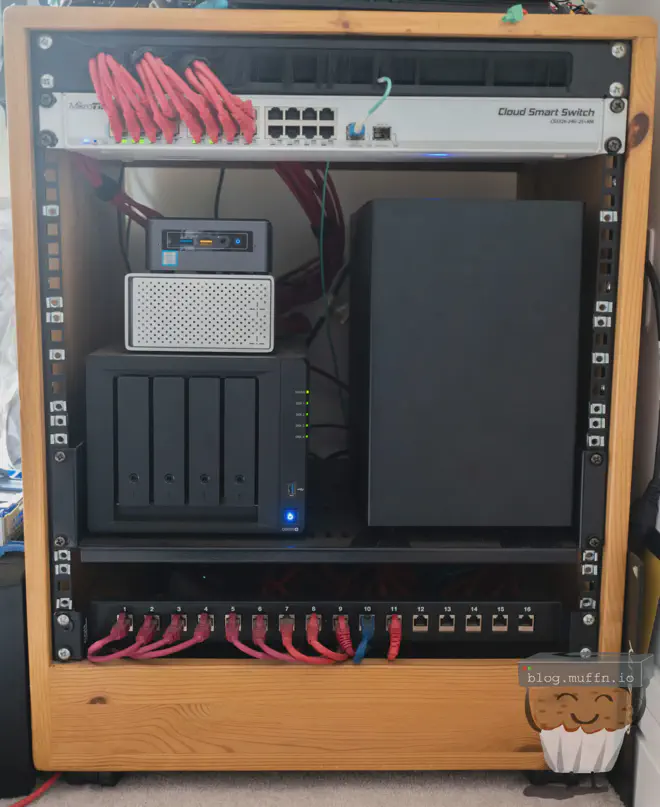
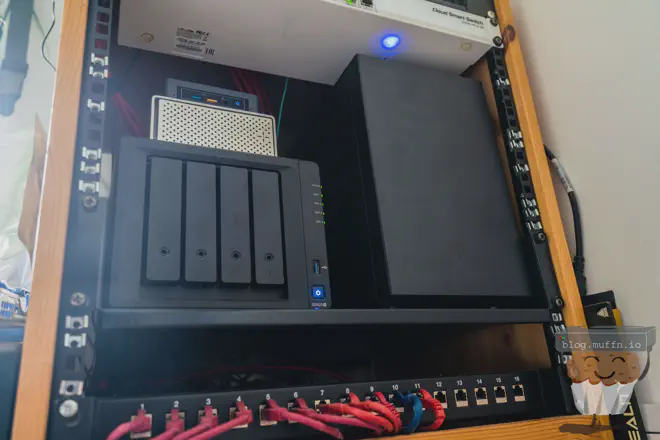
Fin #
That’s it. I hope this has inspired someone to think mighty and small for their next homelab adventure!
Thanks for reading, Muffin~~

